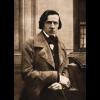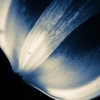Search the Community
Showing results for tags 'piano', 'sonata', 'solo' or 'alevel'.
-
Hello all! For those that don't know me, I am a high school senior, graduating in a couple of weeks, and I have nothing to practice over the summer before I go study composition at Lawrence Conservatory. This summer, I really want to improve my playing 10-fold, my plan is to double my practice time and to improve so much, I'll have a really strong start when I start school in the Fall. Just to give you a picture about where I am performance wise I was 1st chair oboe at District band I have also done numerous college auditions, and every school that required an instrumental audition, I got accepted to with the exception of the Cleveland Institute of Music, which I was waitlisted to. So, basically, I'm a strong oboist with a good tone who wants to play good music. To do that, I'm going to need your help. I love new music, I don't care what style it is, I just care that it is good. I have an array of pieces I want to record this summer, but I also want to add to that, 4-6 original compositions. Let me repeat that. 4-6 compositions. That's where you come in. Basically, I am asking you to write a 3-7 minute piece for Oboe with or without accompaniment (if w/out please stay on the shorter side, my endurance is not that great). You may do whatever you want with the composition, you can include multiphonics, altissimo (I can play up to a high A, I can probably go higher, but I've never tried). As far as difficulty, please keep in mind that I'm doing other things this summer, I'm playing with a Wind Ensemble, and possibly a symphony orchestra, along with 2 jobs. I can handle if it's difficult, just don't make it insane. Basically, if you know your oboe literature, I can handle Mozart and Vaughan Williams, but nothing like Corigliano, if that helps you understand a bit more. If you're not sure, just ask me, I'll be glad to help. So, as far as a deadline goes, how about June 25? and I would give results on July 1, and will give you all feedback, so everyone will know why they did or did not make it. Rules: must be between 3-7 minutes favor towards accompanied works, unaccompanied will be accepted, but they have to be 2-4 minutes accompaniment must be piano (nothing else) must be complete by June 25 ok, I'm really hoping I get some responses to this, I will do my best to give you guys the highest possible quality recordings, and if I end up performing solo at a recital (another thing I'm looking at), I will very likely play one of your pieces. I may not be a professional, but I definitely don't sound like a dying duck. I'm good friends with people from Interlochen, I've performed in just about anything, I can do this, and you can write this! So, don't let anything prevent you from submitting (what have you got to lose?) Go ahead and give it a try! Don't fail me my composition brethren!
- 34 replies
-
- 1
-

-
- competition
- high quality performance
-
(and 3 more)
Tagged with:
-
Hi, I just started my first solo violin composition and i have 2 question about the score right now. i showed them in this picture : Does my explanation of how to play like crescendo from "ON-THE BRIDGE" to "BEHIND THE BRIDGE" right ? should i write "Similare" for the same bowing after the 2rd measure ? Thanks and excuse me for my low English
- 2 replies
-
- need help on my solo violin s
- solo
-
(and 2 more)
Tagged with:
-
General Information Bachelor of Music undergraduates from any Australian tertiary institution are invited to enter the inaugural Duo Entendre Composition Competition. Applicants will be required to submit a composition of up to 5 minutes duration for the instrumentation of horn and piano*. The work can be of any style providing that the score is legibly notated with computer software. Electronics and prepared piano can be utilised providing clear instructions are given. *Stuart & Sons 102 key Concert Grand - see Stuart and Sons website for specifications. Prize The winning composer will receive a $1000 prize. A concert program including the winning composition will be devised from the entered works. This free concert will take place on Sunday October 5, 2014 at 3pm in the Harold Lobb Concert Hall, Newcastle Conservatorium. The winner will be announced at this concert. Full details and entry form available from our website: http://www.duoentendre.com/competition.html
- 1 reply
-
- composition
- competition
-
(and 2 more)
Tagged with:
-
Hey all again! I haven't been here for a long time... :) I have a new competition idea for you, but not sure, if anybody would be interested.. At least maybe I start your brain for today :D In February, I bought my electric cello (yamaha svc-110). I use it mainly in my rock band, and some jazzy stuff, but now I decided to write a piece for electric cello and tape. I would like to write it and perform it during the winter. Of course that wouldn't be the only piece, what I would play on that concert, and that's why I'm writing to you, guys! So if you really feel like you want to write a work for electric cello, please go for it! It's a beautiful instrument, with a very cello-like sound, but with so many possibilities. About the instrument I think I need to write some details about the instrument. Using an electric cello without anything else would be quite boring and stupid, so I have 2 pedal systems: Line 6 POD HD500 is my effect processor, and BOSS GT-100 is my loop station. With the effect processor, I can have plenty of effects like delay, distortion, reverb, transposing, filters, phaser etc etc etc... so what electric guitars have. You can connect 8 effects, so you can have delay and distortion in the same time. I can attach a pedal touching for each effect, so I can turn them on and off individually. It can have stereo sounding too, so you can make different effects on each side. I know that this is not enough information, but if you're interested, you can check the electric guitar effects on the internet, and you will find a lot. You can use them. Or for example you can say in the score that "I would like to have here a mysterious sound" or "Please add here a strange effect, what makes the audience wake up". So trust me, I can help, you just need to make a good question :) The Boss pedal is a loop station, so I can record there (to 3 separated tracks - we can synchronize them, but that's not a must, they can have independent tempo, timing), and it repeats as long as I want. You can delete the whole track, or you can stop them, fading out, or immediately. Also there is a "stop/start everything" pedal, which is very nice - an immediate silence is always a nice thing. It has some effects too, but very bad ones, I don't use them. About the pedals (mainly the Line 6 one) you need to know, that pushing a pedal has a noise, so count with that. (on the recording you won't here, but life it can be audible in the first 3-4 rows. You can compose it in the work, if you want! :) The cello itself is really like a normal acoustic cello, just it doesn't have the body, and works with battery. :D About the works I would like to play With the loop station, it's quite easy to write and play 'popish' music. You can also write some meditation music, with the loop station, sustained notes repeated, for example. Check youtube for some ideas, if you don't know, how looping works, there are many videos. Of course I would be very happy to play some contemporary classical music on the electric cello, and that would be the main aim. I would prefer a work for solo electric cello, or cello with recorded accompaniment, as I don't really have an other musician, to play together with... :/ It may be possible, that I can record the accompaniment, if you want to use the Steve Reich technique. The most important thing: the work should be for electric cello. You can rewrite your solo acoustic cello works if you want, but changing the title is not enough for me. I would like to see some effects, new ideas, creative things. One other, but very important thing: I'm still not a professional cello player. You can write complicated things, but not very very complicated, I don't really have time to practice a lot. Please excuse me for it! What I can give The works I like the most I will perform (sooner or later). I would like to have some solo concerts until spring, because organizing a solo concert is much easier, than anything else. Also I can make recording in my home studio if you want, is less work, then playing on a concert. :D If you have any questions, please don't be shy! And you can write it here, to help the others. Also if you're interested, please write! I would like to know, if anybody is thinking about my idiot ideas :D My e-mail address: gollam12@gmail.com. Please use the subject option in the mails, because I get many emails during one day, and I don't want to miss any of yours! Good luck, have fun! Marcell Magyari
- 5 replies
-
- 1
-

-
- electric cello
- solo
-
(and 2 more)
Tagged with:
-
I have some weird priorities in my search for a sample library. I would really appreciate advice from people who know the offerings better than I do. - I don't want to make mockups of pieces. All I care about is hitting keys on my keyboard and hearing a high quality solo instrument sound come out of my computer with little latency. - My system resources (4GB RAM, 1.8 GHz Core i7, SSD) wouldn't handle anything too demanding, and I'm not planning to have a dedicated 2nd machine for this. - I don't need any special articulations (not even pizz). I can hear the effects and bowings I want; I just want a nice legato sound while I play around. - I only need western orchestral instruments (I do need wind doublings, at least down to alto fl, bass cl, english horn & contrabassoon). For percussion, I only need vibr, mar & glock. I was even thinking about just buying a good standalone grand piano instrument (so it would be as if I were just using an acoustic piano for composing -- not trying to have other instrument sounds at all). But I thought I'd ask here to see if there's some broader library I might like. Budget: I haven't done enough research yet to know what my budget needs to be. (I just heard about some prize money and could use all of it for this [1000 USD] if I had to.) I'm not interested in buying Sibelius 7 for its sounds (was suggested in another thread). Thank you for any thoughts!
-
This is a very intense piece, romanticism at the maximum. In English it is called "Love Death". Dying for love, is it supposed to be sad? I am not sure... Not if you are a lover. So, it is the final piece played at the opera called Tristan und Isolde; and it is sung. But here is the orchestral version, which I prefer over the sung one. I think I have listened this piece 100 times in the last days, as it is so delightful. And after being searching and listening for many versions, I found this one: Which is the Liszt transcription to piano, but it is not played as pianists usually play it, but in a very special and personal way, by pianist Ervin Nyíregyházi. I listened to the other piano versions, but this one is... the best. Almost as intense and affective as the orchestral version, with a piano... You should listen first the orchestral version, and later the piano version. You will be delighted, with both.
-
Hi, guys! I'm a teenage guitar player and songwriter and I'm participating in an awesome guitar solo competition. Here's my entry: http://promoshq.wildfireapp.com/website/6/contests/318481/voteable_entries/67353975 Vote for it if you like it and thanks for support!
- 1 reply
-
- guitar messenger
- solo
-
(and 4 more)
Tagged with:
-
Is it so important to avoid any reference to the 1st key in the 2nd theme of the exposition? I think it's no big deal, but if I ever post the sonata form I'm writing, I guess everybody will point it out and bash the piece. The piece starts in G min and modulates to Eb maj for the 2nd theme group. However, I made a feminine P.A.C. in G min at the end of a phrase of the 2nd theme, even though that key is not "confirmed". Eb maj is still the prevailing key: Start 2nd theme--> Eb [...] Fmi Ab/C D7 Gmi Fmi7 Eb/G [...] Eb/Bb Bb7 Eb <-- End I've tried workarounds (deceptive or inverted cadences...) without success. The melody seems to "call" for that cadence What do you think? Thanks
- 4 replies
-
- tonicization
- sonata
-
(and 1 more)
Tagged with:
-
Hi, I'm new here, so forgive me if I'm doing something wrong. I'm writing a sonata-form movement in Romantic style (Schubert, Brahms...). I've written: 1st theme (8+8 bars), ending on i (G min) transition (G min >> Eb) 8 bars of the 2nd theme (starts at bar 57), ending on V (Bb major chord) However, I'm stuck here. :dunno: I've just moved from a classical to a romantic style, and the proportions are bigger. I know I should write something looser and more lyrical here, and it should be roughly 50-60 bars long for balance. I could use more than 1 theme (?), and perfect cadences should be used sparsely. I tend to write very "marked" self-contained themes, like the 1st one, so my initial idea was to write another 8+8 antecedent/consequent. But I can't do this, I must include more material before the V-I and the codetta. Thus, I've written some "continuations" after the 1st 8 bars ending on V, as well as a climax based on that tune, and a little codetta... I don't know how to assemble all that stuff. I've checked out tons examples, but I'm kinda blocked. Any tips? What is your experience? Thanks!! :D
- 2 replies
-
- sonata form
- sonata
-
(and 6 more)
Tagged with:
-
I know that there is a line that can be written, as the pedal line, but indicating it is the sostenuto pedal. But I have found other scores that seem to call -or could be played with- the sostenuto pedal, without writting the lines. And I was asking myself if that is allowed. Also, if it is allowed, what is the best way to write it. In example, I have these two scores, that have the notes as indicating different instructions for two instruments -as in violins pentagram in an orchestral score-. Mussorgsky, Bilder einer Ausstellung, Promenade: Bach, Praeludium I, BMV 846 At the first one, in the G key pentagram, we can see two white notes, being played at the same time other black notes are played in the same pentagram. At the second one, at the F key pentagram, we can see again two white notes being played, and other notes played too. But you can see that the first one does not have silences for the second instrument to be quiet until played, and the second one does have silences. Obviously there are not a second instrument, and this indicates something that would be played with the same hand. The musescore program lets me put it or make it invisible. So I am not sure what to do here. If I am writing a score that requires the usage of the sostenuto pedal, may I write the sustained notes as if they were a second instrument, and without silences? Is it obligatory to use the pedal line? I think it looks better using the score as if there were two instruments. But I need to know if this would make my score unintelligible. I think it is more elegant than a lot of ligature lines, and easier to understand than a sostenuto pedal line (as you actually show what notes you want to be sustained). I was thinking in things like this: The second seems to be impossible to play without making the other not sustained not at the same time played, be sustained; or stretching a lot the fingers.
- 9 replies
-
- counterpoint
- mussorgsky
-
(and 4 more)
Tagged with:
-
I have recently completed a revamped keyboard sonata originally composed by the 18th century Spanish composer Antonio Soler. The sonata is in MIDI format, and I'm wondering if any of you guys know if this kind of composition can possibly be submitted to kunstderfuge.com, which is a site that deals with classical compositions in audio format. You see, the sonata is mostly the work of Soler, and I copied most of the music from free sheet music written by the original composer, and I merely edited and added parts to the work. So, if it is possible to upload this kind of work to that website, how should I go about doing it? If it is not possible, where would be the best website I could go about sharing it?
- 4 replies
-
- kunstderfuge
- soler
-
(and 2 more)
Tagged with:
-
I just wrote a blog post featuring resources that have been very helpful for me in learning to play the piano/keyboard. Hope you guys will benefit from this as well: http://marklaukkanen.tumblr.com/post/27709974418/five-excellent-resources-for-piano-players
-
Hello fellow pianists :-) I would like to hear your opinion. I am the university student and this year I am working on my bachelor's thesis. I would like to make a smartphone application that would help the piano students or composers to easily transfer their ideas to piano score. The application would be capable of recording someone playing the piano then it would recognize the single notes or polyphony, the rythm and finally it would generete the MIDI output. The MIDI output could be then imported to some 3rd party dekstop software (like Finale, etc.) to obtain the classical piano score. Before I start I need to know whether you, pianists, would even like to use such an application. So would you use an application that can recognize and process the piano sound and generate the MIDI output? And if so what mobile platform would you prefer? Android / iOS / Windows Phone / Symbian / BlackBerry / anything else? What do you think? I really need your feedback and I would appreciate every answer! :-) Thanks in advance.
- 9 replies
-
- piano
- smartphone
-
(and 6 more)
Tagged with:
-
I compose many pieces for solo instruments. Whenever I want to upload them, I am faced with the problem that there is no specific section for solo instruments other than piano. As a result, I am being forced to upload them either in the piano section or in the chamber music section (mostly the latter). If we could have a specific section for solo non-keyboard instruments, I think it would be great. Maybe it would even generate more interest in composition for solo instruments. Thank you.
- 5 replies
-
- solo
- non-keyboard
-
(and 2 more)
Tagged with:
-
link del post en taringa: http://www.taringa.n...237/Chopin.html Federico Chopin http://2.bp.blogspot...1600/Chopin.png Uno de los mejores compositores lejos... Nadie puede compararse en tecnica compositiva, pero sobre todo en esa cosa muy dificil de explicar, esa pasion en cada compás. Hola, hace varios meses vengo trabajando en un projecto que empeze yo mismo, yo tengo 15 años, y quiero ser compositor. Toco el piano, y estoy aprendiendo música, para a los 18 ir a Polonia a estudiar composicion en el conservatorio. Yo tambien compongo , pero no puedo decir que soy chopin, todavia me falta aprender bastante. Para la poca gente que le interesa la música de este genio, aqui les dejo una ayuda para componer en su estilo. Por ultimo una pequeña reflexión personal: Es muy facil realizar un cálculo matemático, pero crear un buen compás de música es el mayor desafio que puede existir. Estilo musical de Chopin 1) El secreto de la composición es siempre variar las ideas y usar toda variante hasta que quede la frase deseada. Por ejemplo si estamos “trabados” en alguna frase y no sabemos como seguir podemos, tomar un papel y escribir distintas maneras para seguir, todas diferentes, y elegir la que mejor quede, este modo se llama descarte. 2) Se pueden crear todos los recursos compositivos imaginables. Esto quiere decir que no siempre la musica debe ser todo el tiempo “igual” , por ejemplo, en la clave de sol, la melodia, y en la clave de fa, primero la nota del bajo y luego el acorde. Sino que hay millones de formas infinitas de escribir la musica, para que no sea tediosa, un ejemplo muy claro seria el siguiente: Rondo op 1 , Frederic Chopin: http://a8.sphotos.ak...1_5082526_n.jpg En los primeros cuatro compases, marcados en rojo , hay una forma de expresar la melodia totalmente distinta a la parte azul. En la roja se muestra por octavas, Y en la azul se muestra como anteriormente dije, melodia y bajo/acorde. Luego esto CAMBIARÁ para que no sea tan tedioso escuchar toda la pieza igual: http://a1.sphotos.ak...6_6782487_n.jpg La parte azul se mantiene hasta que en un momento vuelve a la forma roja, parecida a la del comienzo pero una Melodia distinta. Es cuando entonces llega la parte verde. Cambia totalmente la forma de la melodia y el bajo, se puede apreciar que es totalmente distinta a las dos anteriores. Eso es lo que Chopin buscaba, que la pieza no sea siempre igual o tediosa y para esto hay un monton mas de recursos, porque como se puede apreciar sigue estando en el mismo tono. Luego si cambiara de tono, pero estando en el mismo hay muchos recursos que uno puede INVENTAR, para seguir la obra. 3) El fraseo y la “cantabilidad” son los elementos principales y característicos en la música de Chopin. Quiere decir que la melodía debe poder ser cantada. Otro de los aspectos fundamentales es el empleo de un rubato muy característico de este compositor: el rubato reservado para la melodía; una melodía entendida como foco de atención, que se desarrolla con independencia respecto al acompañamiento. 4) En Chopin es particular el salto de séptima. Hacia arriba o abajo. Pero nunca resuelve este en la tónica sino que genera una frase. Este salto puede ser de 7 pero de dos octavas como en el último ejemplo y tambien de novena, etc. http://a5.sphotos.ak...0_1862014_n.jpg Nocturno en sol menor. Fa mayor resuelve en sib. http://a1.sphotos.ak...2_1654454_n.jpg http://a7.sphotos.ak...3_7538395_n.jpg 5) También los cromatismos. Antes de regresar a la tónica en el quinto grado en este ejemplo: http://a7.sphotos.ak...8_4107254_n.jpg Y en el juego en una nota con otras cercanas. http://a2.sphotos.ak...1_1772111_n.jpg 6) También repite notas rápidamente para acentuar. Esto es característico en su estilo. http://a6.sphotos.ak...3_4717794_n.jpg 7) A veces cuando esta en un quinto grado puede repetir la frase dos veces. Una terminando en un tono mayor y seguido de eso una terminando en un tono menor. 8) Chopin siempre agrega notas de paso para que el sonido no quede tan cuadrado. Es muy importante para la melodia el uso de notas de paso http://a7.sphotos.ak...4_1190061_n.jpg 9) El estilo de Chopin presenta muchas células de este tipo, Son muy caracteristicas del folclora polaco, de la mazurka etc: http://a5.sphotos.ak...7_4299137_n.jpg 10) Chopin generalmente no va demasiado grave en la armonía. No mas de 2 octavas abajo del do central pero hay momentos en que deja pasar esto. Tambien logre observar que el quinto grado es el unico que deja el bajo ir mas grave que al tonica, los demas grados ubica su bajo mas arriba que el de la tonica. 11)Se observa además sobre el cromatismo la misma nota pulsada varias veces comenzando desde la octava. Esto se llama nota pedal o al revés desde arriba. También no tiene que ser siempre cromatismo pueden ser notas de la escalas etc. http://a6.sphotos.ak...8_7018497_n.jpg 12) El Mazur danza típica del sureste, (danza en tres tiempos (3/4) con acentos en el la melodia en el segundo y el tercer tiempo) se caracteriza por su paso deslizado, con ritmo punteado, Esta manera de componer la encontramos en sus valses, canciones, el Concierto en fa menor, la Fantasía núm. 13 y en sus 58 mazurcas. 13) Acorde disminuido muy característico en muchas composiciones de Chopin. Les da su toque armónico. Resuelve en el tono mayor del mismo acorde. http://a4.sphotos.ak...9_1994312_n.jpg 14) Las estructuras de los conciertos de chopin siguieron el ejemplo de los conciertos en el estilo de Jan Ladislav Dussek y Johann Nepomuk Hummel, con la que estaba familiarizado. Él estaba interesado en el diálogo de Beethoven entre los instrumentos, la orquesta y el solista, en un entrelazamiento de voces como hacía weber . Una importancia destacada es la visualización de las habilidades expresivas y técnicas del solista en los conciertos de Chopin. El primer movimiento del Concierto en Mi menor tiene tres temas, que son introducidos por la orquesta. El piano juega con el primer tema (compas 139), seguido por el segundo tema lírico (compas 155), acompañado por el motivo principal del primer tema en contrapunto del bajo. 15) Chopin añade muchas notas de paso y cromatismos cuando tiene que desarrollar un tema como por ej en el nocturno op 9 no 1. http://a7.sphotos.ak...0_3198958_n.jpg 16) Así como en las composiciones se pueden usar notas de paso también se pueden usar acordes de paso. Se puede sostener una misma nota con la mano derecha y cambiar de acordes con la izq., pasar por distintos y viceversa, con la nota suspendida en la izq. También pueden ser dos notas o más suspendidas. 17) Se pueden hacer escalas de más de una nota a la vez, por ej: de triadas o de dos notas a la vez.. 18) Usar distintos bajos con el mismo acorde. O el mismo bajo con distinto acordes, por ejemplo el bajo sol, con el acorde sol menor o do menor. Es un recurso si no hay espacio en el compás o puede usarse en toda la obra. 19) Si se quieren escribir acordes cromáticos se pueden usar inversiones de otros que queden cercanas al acorde de donde se está. 20) A veces se puede transportar a una misma frase a otro tono, esto sería como repetirla pero un poco mas aguda. Por ej: si se esta en do menor se puede tocar la misma frase en fa menor luego. Mirar rondo op 1. 21) Todo se puede hacer en una composición lo mas importante es recordar que aunque se piense que algo es absurdo se puede convertir en algo muy bello si lo armamos adecuadamente. 22) Finalizar una idea con esta célula da una sensación de acabada. Este acabado se ve en muchas obras de bach, y además de en el rondo op 1 de Chopin. http://a1.sphotos.ak...31_445172_n.jpg 23) También se pueden usar acordes arpegiados rápido sin el bajo para no ser tan repetitivo. 24) En Chopin hay algo de contrapunto escondido en las partes rápidas con las dos voces interiores. A veces las voces exteriores hacen movimiento contrario, una escala va hacia arriba y la otra hacia abajo. 25)Para el comienzo de la obra por ej si es anacrúsico se puede tocar una nota y sostenerla tocar el bajo y que la nota sigua sonando como en el principio de la mazurca op 6 no 1 de Chopin. 26)A veces para pasar de un tema a un tema b Chopin lo hace mediante una nota de paso cromática. Por eso cuando termina el tema a deja la última nota a distancia de un tono de la nota principal del tema b para pasar mediante una nota cromática. Mirar mazurca op 6 no 2. 27) Cromatismo abierto: Muy característico en el romanticismo y en la música de Chopin. http://a5.sphotos.ak...3_5752698_n.jpg No tiene que ser si o si a la octava sino que puede ser de otros intervalos. Vals op 64 no 1. 28)Los estudios de Chopin son ricos en armonía y se puede usar para aprender. Observar estudio op 10 no 11. 29) Es muy característico del romanticismo tocar un acorde de nuevo y cambiar algunas notas del acorde cromáticamente o simple mente moviendolas para dar una sensación de aumentación o otras. Se puede además empezar de uno aumentado a uno de reposo como en el principio de la balada no 3. http://a2.sphotos.ak...35_536528_n.jpg 30) También además de cambiar algunas notas otro recurso sería mover la armonia cromáticamente. Vals op 34 no 1. http://a4.sphotos.ak...6_8176211_n.jpg 31) Estos saltos son muy característicos en Chopin cuando quiere darle fuerza: http://a3.sphotos.ak...9_5053670_n.jpg 32) Cadencia con progresión: Muy característica en Chopin. http://a4.sphotos.ak...3_6813908_n.jpg 33) Cromatismo en el bajo: las demas notas quedan iguales. http://a1.sphotos.ak...4_1518347_n.jpg 34) Balada no 3. http://a3.sphotos.ak...47_521089_n.jpg Progresión muy característica en muchas composiciones de Chopin. Apoyaturas en el bajo si y re, progresión VI – I 35) El cantabile de Chopin demuestra sus apoyaturas cromáticas que le dan su estilo melódico. 36) Como recurso melódico se puede emplear lo siguiente con notas del acorde en la voz interna y cromatismos en la voz superior: Las notas del acorde están marcadas. http://a6.sphotos.ak...9_1295904_n.jpg 37) En esta cadencia Chopin abre el acorde de dominante y luego resuelve distinto porque hace sonar el acorde de tónica más suave. Estos arpegios son característicos de él. http://a5.sphotos.ak...2_3843680_n.jpg 38)Un recurso que Chopin utiliza al terminar una obra es repetir muchas veces el mismo compás con el mismo bajo. Esto da una sensación como que el sonido se va alejando, por eso esta indicado perdendosi y va cada vez más suave. Mazurka op 24 no 3. http://a3.sphotos.ak...3_5625677_n.jpg 39)Chopin a veces utiliza notas muy cercanas como nota pedal en las mazurcas. http://a3.sphotos.ak...8_4812642_n.jpg 40)Sus mazurcas se caracterizan por tener una pequeña sección armonica-cromática, en algunos compases. http://a5.sphotos.ak...9_3749898_n.jpg 41) Aca un ejemplo de cómo usa muchas veces el mismo acorde en el bajo, pero con notas distintas en la voz superior. Esto no lo hace durar mucho, sino seria muy monótono. http://a4.sphotos.ak...0_3212709_n.jpg 42) Un recurso para que nuestra composición quede bien sería agregar una escala rápida en algun momento, ya que las partes rápidas vuelven a llamar la atención del que escucha.
- 9 replies
-
- 1
-

-
- chopin
- composition
-
(and 2 more)
Tagged with:
-
Since Paul and Robert were going to listen, I decided to add a little description to the 3 amazing piano concerti of Rautavaara. if you have spotify I recomment the recording of Gothoni, for the 1st and 2nd concerto Concerto 1, mvt 1: http://www.youtube.c...h?v=ank-lcc-bhU (with score) This concerto opens with left hand piano runs and right hand clusters. These ingredients will continue to play an important role the whole movement, while it is quite lyrical. A combinations is especially noteworthy, the piano plays a soft gentile B theme, while at the end of a phrase plays really loud clusters. The effect is really cool. The 2nd movt ( ) is a sweet middle pianoconcerto movement.The 3rd ( ) is rather energetic, danceable, where he added small introjections/trills by several winds like a painter adds blobs of piant.The 2nd concerto ( ) is similar and different of the 1st the same time. Hazy fast figures introjected with harsh moments (flexatone!) remind of the 1st concerto. But the tone is more sad. This concerto features a rather lyric and painfully beatiful mourning-theme that is exposed in the first and recaps in the 3rd movement. This theme is played so often, between the percussion interojections, the effect is that of a profoundly sad ostinate. I found this one the hardest to learn to appreciate, but now I probably like this one the most.The 3rd concerto ( ) is more different. The interesting thing about the harmonies is the pure counterpoint, because of the mirroring bass. The restult is quite pretty bitonal. Then the piano plays nice chords, accompanied by the strings.The 2nd mov is again the normal expressive piano concerto mid mvt ( )The 3rd is like it suposed to be the energetic finale, but I can't find it on youtube.
-
-
I have been playing piano for about 6 years now, and have just recently (the past month or so) started composing my own piano pieces. I mostly play contemporary music and improv, but I have taken an interest in classical music, more specifically, bagatelles, preludes, etudes, and sonatas for the piano. My question is this: What gives a piece that "classical sound". When I compose a piece, and listen to it, it sounds very contemporary and modern. How can I achieve a more classical era style? Are there specific rules or guidelines that these composers follow? Thanks.
-
Duo Sonate - For Two Bassoons Composer: Sophia Gubaidulina I first heard the work of Gubaidulina late one night while perusing concerti on YouTube. The piece that caught my eye was her Viola Concerto. I wasn't necessarily familiar with her music, but was very familiar with the violist performing it. The music left me breathless. The structure, the pacing, the harmonic language, the orchestration, and the treatment of the solo line all were very well done. It was from this piece that my deep love of her music grew immensely. When asked to research composer's works for the composition lesson, I quickly chose Gubaidulina. The work I chose, sadly, wasn't the viola concerto but instead a smaller chamber work: . In this analysis, I will look at the structure of the piece.In looking at the score in depth, I was quite surprised to find that the form is quite traditional: sonata form. The reason for the surprise comes in the techniques used in the bassoons: flautando, multiphonics, harmonics, and microtones. Granted, these shouldn't immediately dismiss the possibility of a traditional form being used to structure a piece. The formal sections are: -the introduction lasts from the opening to rehearsal mark 2. -the exposition from rehearsal mark two to the Grand Pause that precedes rehearsal mark 13. -the development from rehearsal mark 13 to the grand pause that precedes rehearsal mark 31. -the recapitulation from from rehearsal mark 31 to roughly rehearsal mark 35. -the coda from rehearsal mark 35 to the end. The exposition breaks into roughly 5 subsections of interest. The first is from rehearsal mark 2 through rehearsal mark 5. This subsection is the first theme of the work. The second is from rehearsal mark 5 through rehearsal mark 6. This short passage, at first, appeared to be inconsequential or transitional in nature. It wasn't until the development section that I realized this was actually a second theme. The next subsection is a return to an altered version of the first theme.This starts at rehearsal mark 6 and lasts through rehearsal mark 9. At rehearsal mark 9, a variation of the overall texture acts as a transition and build up to the final subsection which starts at rehearsal mark 12. This final subsection lasts up till the grand pause right before rehearsal mark 13. In classic sonata form, the development starts with a restatement of the themes presented in the exposition. The first theme is stated at rehearsal mark 13. After the restatement, the development quickly begins. The development occurs in three subsections. The first subsection starts at rehearsal mark 14 and lasts through rehearsal mark 15. In this section the second theme is developed. Underneath the first theme is broken up and used as support. The second subsection is from rehearsal mark 15 through rehearsal mark 22. In this section the development of the first theme occurs. Interwoven in this, for means of temporal movement, is the introductory scalar material in inversion. The final subsection starts at rehearsal mark 22 and lasts until the grand pause right before rehearsal mark 31. In this section the second theme is absorbed into the scalar material and expanded to present a long scale that rises slow at first and faster until it reaches the grand pause. The recap and coda follow the second grand pause. The recapitulation starts at rehearsal mark 31 and lasts through rehearsal mark 35. Here though the first theme is the only one restated, albeit in an altered version. The coda starts at around rehearsal mark 35 and lasts until the end of the piece. The material treated here is the scalar material from the introduction. The material is treated with several developmental techniques. Most notable is diminution and augmentation of the note values. Overall, I learned a great deal in analyzing the work in this way. I've greatly admired nearly every piece I've heard by Gubaidulina. This piece showed me a great genius behind her compositions and showed me several new things that I previously did not know that bassoonists could do (multiphonics and harmonics). I look forward now to breaking apart more of her works.
-
A little music background: I played the piano since the summer before sixth grade. I took private piano lessons with various teachers (not the kind you might meet at a conservatory of music or a college) until I quit about five months ago. Now I'm on my own, and I'm going to teach myself to become a virtuoso pianist. The daily practice routine I'm following is 1) Hanon exercises 2) scales and 3) three to four piano pieces. Also, I've recently taken the position of piano accompanist for my high school's choir, so I have to learn piano accompanist parts in addition to my current routine. The musical pieces I'm currently learning aren't easy though (Hallelujah for example). I need some advice on how to practice difficult pieces and what is an effective practice routine. I'll really appreciate it if anyone can give me some good tips!
-
The Piano Vs The Computer in Modern Popular Music?
Amon Jura posted a topic in Advice and Techniques
So I recently loaded up Spotify (Free music listening software for those less computer savvy :P) and on the opening page there are some album art covers of artists you may be interested in. Anyways it dawned on me that all of the musicians listed had no real musical training. It got me thinking. In todays society do you reckon that more and more people are not starting or sustaining instrument lessons instead using thier knowledge of software such as Logic or Cubase to create music in a digital domain instead? and is the piano still used as much as it was in the early 20th century or even the 70's/80s with such performers as Elton John and Billy Joel? Long question i know but just would be interested to find out what other peoples perspective is on the matter :D thanks in advance -
I am working on a composition but it has barely this chords: C, C aug, Dm, G, G aug; and in very short parts: Em Fm and Am. And little variations. The composition is for piano, written in the key of C major, and I am worried that most of the composition is repeating the C and D chords with little variations. Is this wrong? Is this of bad taste? Is this monotone? What do you think of the harmony in this cases? Thank you for your help.
- 15 replies
-
- few chords
- piano
-
(and 3 more)
Tagged with:














